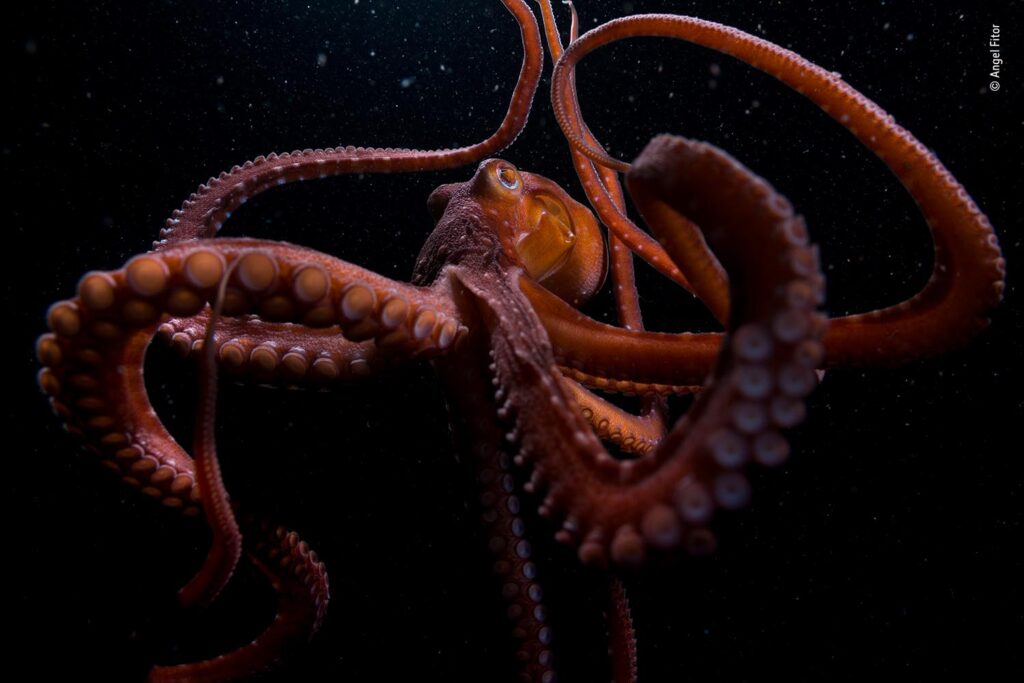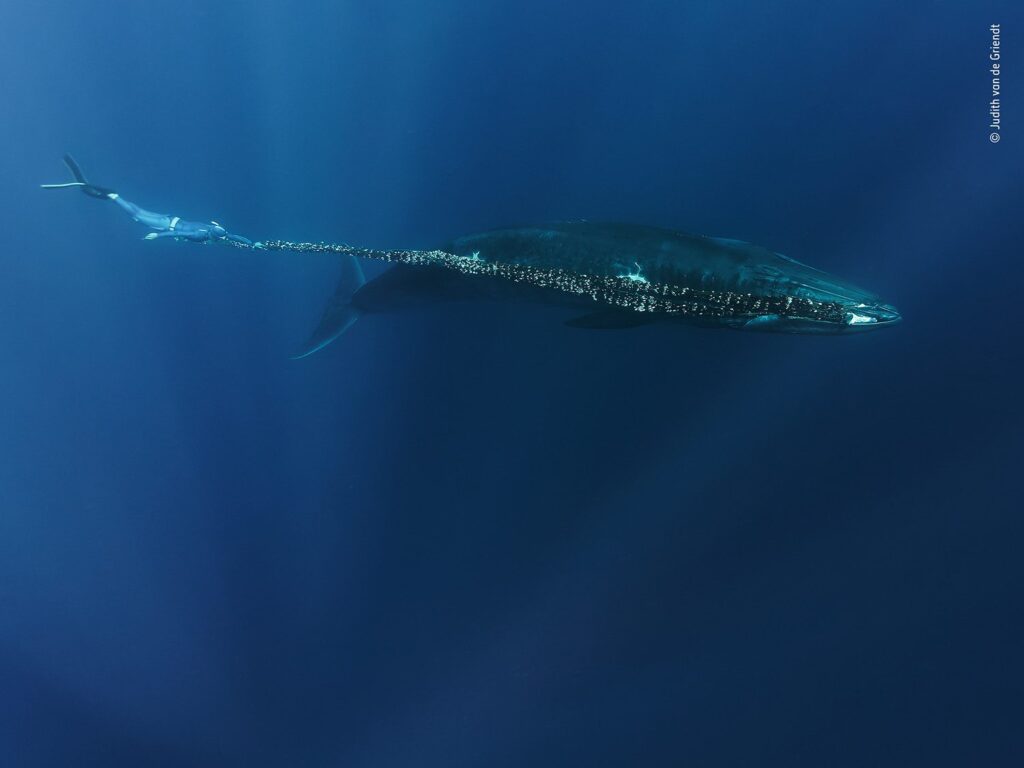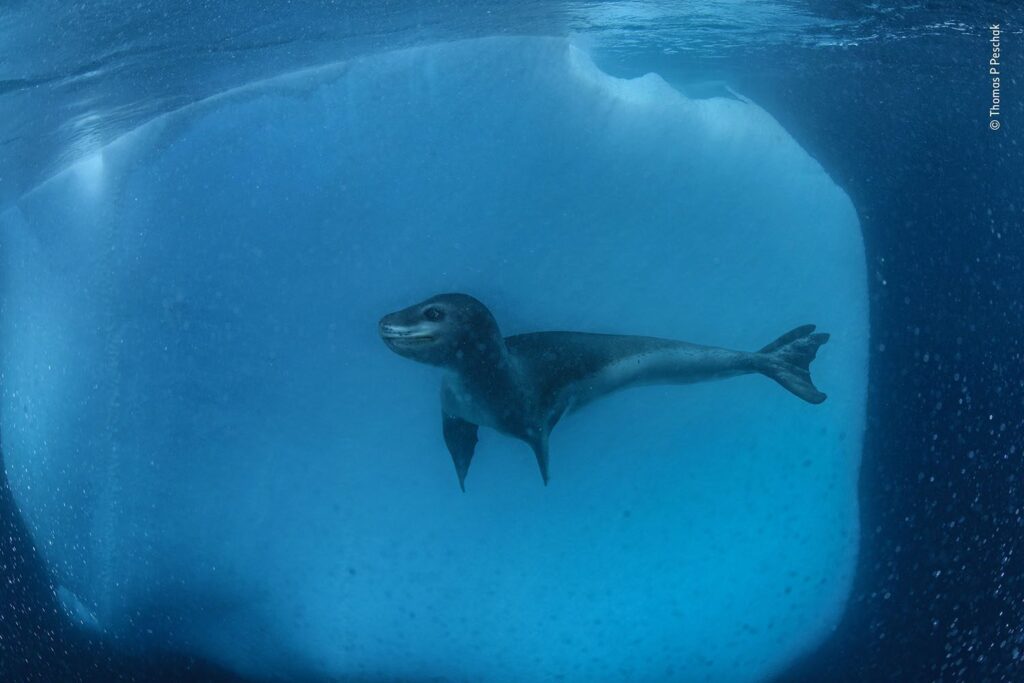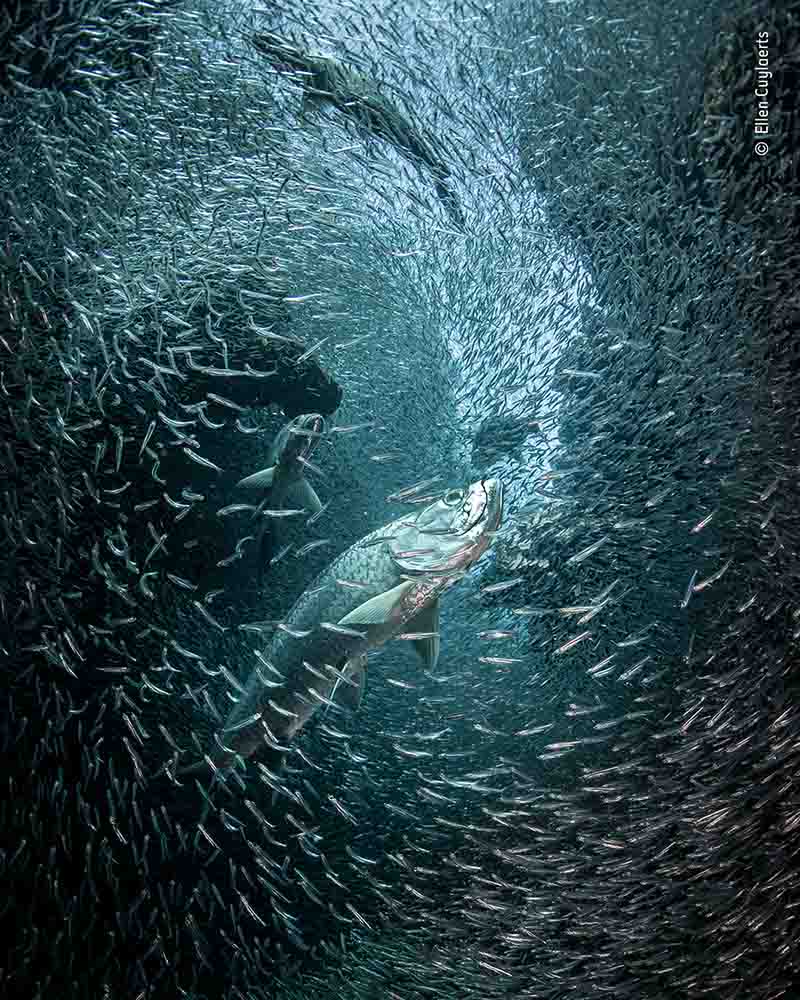The UK’s Alex Mustard was among 12 international underwater photographers to receive Highly Commended accolades in the prestigious Wildlife Photographer of the Year 2022 competition, category winners of which were reported on Divernet yesterday.
Also read: Wildlife contest puts on game-face
The annual contest, developed and produced by London’s Natural History Museum (NHM), received 38,575 entries from 93 countries for judging based on originality, narrative, technical excellence and ethical practice.
Three of the 12 Highly Commended photographs, by divers Richard Robinson, Samuel Sloss and Tiina Törmänen, were previewed on Divernet in September.
Mustard’s unusual Seaweed Symmetry, entered in the Plants and Fungi category, reflected a love of seaweeds the photographer developed while confined to the UK coast during the Covid-19 pandemic.
It shows colourful fronds of hollow bootlace seaweed at Kimmeridge Bay in Dorset reaching for the light, and required careful planning to shoot at high tide in clear water and calm, sunny weather (Nikon D850 + 28–70mm lens, Subal housing + Nauticam WACP-1 lens; 2x Retra Pro strobes, 1/40th sec, f/16, ISO 160).

In the Animal Portraits category, Night Hunter shows Angel Fitor and his camera being investigated by a curious Atlantic white-spotted octopus. The Spanish photographer says he often encountered these “otherworldly” octopuses on night dives in Calpe, Alicante, but with this subject so close to him the challenge was to focus on its prominent eye (Nikon D800 + Sigma 20mm f/1.8 lens, Anthis Nexus housing, 2x Retra Flash strobes, 1/200th sec, f/13, ISO 100).

In Double Interest in the same category Australian Scott Portelli shares the object of his focus, an elaborately camouflaged leafy seadragon, with an inquisitive sea-lion rolling in the kelp but somehow managing not to disturb the seadragon. It was taken in Cape Le Grand National Park, Western Australia (Olympus E-M1 Mk II + 8mm lens, Olympus housing, UFL-3 strobes, 1/250th sec, f/9, ISO 320).

As the tide receded around Fiji’s Great Sea Reef at Vaturova, Vanua Levu, dozens of venomous banded sea kraits headed from all directions towards a lone mangrove tree. To the delight of Juergen Freund (Germany/Australia) the non-aggressive sea snakes seemed to be “swimming all over him”. The Snake Tree was judged in the Behaviour: Amphibians and Reptiles category (Nikon D3X + 16mm f/2.8 lens, Seacam housing and strobes, 1/160th sec at f/11, ISO 100).

Lethal Luggage by Judith van de Griendt of the Netherlands (Oceans: The Bigger Picture) was taken off Faial Island in the Azores when she and a team of freedivers spotted a Bryde’s whale dragging at least 12m of discarded fishing-net. They did their best but could not cut it loose (Olympus OM-D E-M5 Mark II + M.Zuiko 7–14mm f/2.8 PRO lens at 12mm, Ikelite 200DLM/A housing, 1/200th sec, f/5, ISO 400)

In capturing his entry in the same Oceans: The Bigger Picture category, US photographer Russell Laman’s lips, the only exposed part of his body, were stung countless times by swarms of sea-nettle jellyfish trailing their long tentacles in Mexico’s Sea of Cortez. He had been positioning himself to photograph a sea-lion carcass when the living sea-lion appeared to investigate.
Laman called the image Oceans: Past, Present And Future because climate change threatens California sea-lions as warmer waters push their prey to colder climes. Conversely, rises in global temperatures are increasing jellyfish numbers, disrupting marine ecosystems already under pressure (Panasonic Lumix S1 + Canon EF 8–15mm f/4 lens, 1/125th sec, f/5; ISO 1600).

The final three Highly Commended photographs were all entered in the Underwater category. Thomas P Peschak (Germany/South Africa) floated in the distance at Cierva Cove in Antarctica, waiting for a shy leopard seal to emerge. Around him the ancient ice was melting, with streams of air bubbles fizzing out and into the frame. The result was his Melting Moment (Nikon D750 + 15mm f/2.8 lens, Subal housing, 2x Inon strobes, 1/250 sec, f/11, ISO 800).

American photographer Thomas Kline placed his camera in a likely spawning spot in a clear gravel stream at Hartney Creek, Alaska and watched the frenetic underwater activity from above. He released the remote trigger just as a female pink salmon kicked up plumes of sand while digging a “redd” in which to lay her eggs (Canon EOS-1D X + 8-15mm f/4 lens at 15mm, Seacam housing & remote release, 1/500th sec, f/13, ISO 5000).

Belgian photographer Ellen Cuylaerts grabbed her dive-gear when she heard that the silversides were arriving from deeper waters to lay their eggs on Grand Cayman’s sandy shores. She captured Liquid Gold while surrounded by schools of the glittering fish swirling around their Atlantic tarpon predators at Devil’s Grotto, George Town, describing the experience as like “swimming through silver curtains” (Nikon D800 + 16mm f/2.8 lens, Nauticam housing, Sea&Sea YS-250 strobes, 1/160th sec, f/7.1, ISO 500).
The Wildlife Photographer of the Year Exhibition opens at the museum tomorrow (14 October). Sponsored by global green energy company Ørsted, it runs in London until 2 July, 2023 and will later tour the UK and internationally. It is open daily from 10-5.50 and adult tickets cost £17.
The 59th competition opens for entries from photographers of all ages, nationalities and levels from Monday (17 October) until 8 December. Entrants pay £30 to enter up to 25 images (£35 in the final week), but those aged 17 and under can enter up to 10 images for free. Fees for adults entering from 50 countries are being waived. More information and entries here.

